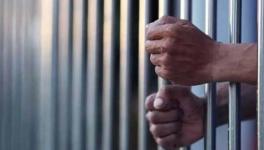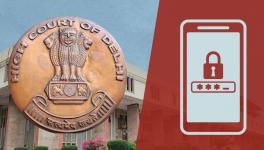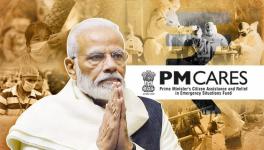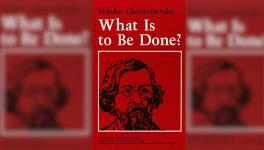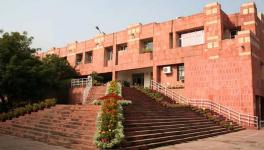What India Needs to Know: Who Orchestrated Delhi Riots
The irony could not be more striking. While US President Donald Trump and First Lady Melania Trump were being feted at Rashtrapati Bhawan by President Ramnath Kovind and the BJP top brass, North-east Delhi was engulfed in wave after wave of violence.
The last three days were Delhi’s worst communal conflagration ever since the anti-Sikh riot of 1984. Old-timers say that the scale and size of these riots has brought back memories of the devastating violence in the capital in 1947 following the partition of India.
This time around, the spark was former Delhi MLA and present-day BJP leader Kapil Mishra’s rally against anti-CAA protestors in Jaffrabad last Sunday. Smarting from having lost his seat in the state elections and in an obvious attempt to remain politically relevant, Mishra tweeted a warning to the Delhi police that if they failed to end the protests, he and his followers would clear the roads of the anti-CAA protesters.
The anti-CAA protests have been on, peacefully, for the last forty days on a stretch of tarmac at Jafrabad. Now, the road that runs below the Jafrabad metro station, linking Maujpur to Gokulpuri, has become the nerve centre of this spiralling violence. It has engulfed the localities of Bhajanpura, Maujpur, Karawal Nagar, Gokulpuri, Kardampuri and Yamuna Vihar.
A large number of pro-CAA men, along with the alleged supporters and members of right-wing outfits, their faces covered, are squatting in this zone, close to the Maujpur-Babarpur metro station, with lathis, iron rods, bricks and petrol bombs. Loud slogans of Jai Sri Ram can be heard here and they have set up loudspeakers to give clear directions to the rank and file about which areas to attack and which should be avoided as heavy stone-pelting is going on there.
Who is giving these instructions that are being amplified in this manner and are being heard by everyone, including journalists covering these riots? The finger of blame points at Hindutva footsoldiers and leaders, who are orchestrating this violence with impunity. If the Babri Masjid episode from 1992 is one of the most stark examples of BJP leaders openly exhorting mobs to bring down the mosque, then what has changed is that the Hindutva leaders do not want to be identified this time.
The kind of loud slogans being shouted out here are reminiscent of the sloganeering that was done by the Bajrang Dal rioters on 28 February 2002, when a mob of 500 killed 97 Muslims in Naroda Patiya. This killing has been described as “the single largest case of mass murder” that occurred during that horror-stricken period, where the Gujarat police force actively favoured the mob who went about killing Muslims and destroying their properties.
Lt General Zameeruddin Shah had told this writer at the time of the publication of his book Sarkari Mussalman how the (3,000-strong) army contingent that he had led brought into control the riots in 2002 was first made to cool its heels for 24 hours at the Ahmedabad airfield, because the state government failed to provide transportation and logistical support.
“Those were crucial hours lost,” he had told me. Extensive losses of lives of the minority community and damage to properties could have been averted on 28 February. “I observed [that] the city of Ahmedabad was aflame. They were fires burning all over. The Army put an end to the mayhem within 48 hours by resolute, firm and fair action,” said Shah.
This is not to say that the Muslim youth have not retaliated or pelted stones or indulged in arson in Delhi. The photograph of a Muslim youth aiming a revolver at a Delhi policeman on 24 February created a storm and is an obvious follow-up of a young right-wing follower brandishing his pistol and firing at the crowd while demanding that the Shaheen Bagh protesters vacate their protest.
The comparison between recent events in the Capital and those horrifying days in Gujarat and 1984 are chilling. Once again the police have proved a mute spectator to these goings-on and, on some occasions, it has been found to be an active participant in instigating and helping the rioters. These actions are a blot on the face of the Delhi police.
The unwillingness to act of the police is in contrast to the alacrity shown by them in attacking students of Jamia Millia Islamia last December. There, they did not hesitate to lathi-charge unarmed students, entering and vandalised even the university library and then using tear gas inside the enclosed space.
Questions are being asked as to why a small police force has been deployed to control the situation in North-east Delhi, given that the Chief Minister, Arvind Kejriwal, had repeatedly warned the government that a large number of anti-social elements have entered Delhi from the neighbouring state of Uttar Pradesh. Several AAP leaders from this area have been ringing up Delhi Police Commissioner Amulya Patnaik, pleading for reinforcements, but to no avail.
To ensure Trump’s visit to the Capital goes flawlessly, a police force of 5,000 pairs of boots were put on security duty. This is in contrast to the completely inadequate police personnel sent to guard India’s own citizens.
The death toll in Delhi has crossed 20, while more than 200 are injured. Activists were forced to go to the Delhi High Court to get ambulances to take the wounded to hospitals. The wounded were not even being allowed to access medical help. Last night, after 87 companies of the Rapid Action Force and CRPF were moved in, the situation came somewhat under control.
The question uppermost in people’s minds is why the central government has shown no interest in holding a dialogue with the anti-CAA protesters and instead allowed the matter to drag on. The fears of the minority community of being discriminated against by this new law should have been addressed right at the start instead of allowing a hundred Shaheen Baghs to proliferate.
It was left to the Supreme Court to appoint two interlocutors to mediate with the Shaheen Bagh protestors. Former Chief Information Commissioner Wajahat Habibullah, who was asked by the Supreme Court to assist the interlocutors filed an affidavit in the Court which says that while the anti-CAA protests have been peaceful, the police is responsible for going overboard in blocking roads unconnected with and far from the protest site.
Instead of allowing the court to see through the entire mediation process, whereby some alternative site could have been found for the Shaheen Bagh protesters, right-wing forces have once again been allowed to hijack the agenda and through their inflammatory statements trigger a riot which has left a trail of death and destruction.
BJP insiders are confident that these riots will consolidate public opinion in their favour. BJP supporters in the affected colonies have been smarting under the recent electoral victory of AAP candidates. They insist that the inability of the AAP to try and quell the riots or play an effective role in controlling the strife-torn situation is proof that only the BJP can rule effectively.
Whether this dangerous move will pay dividends to the BJP will be known in the coming months, but there is no doubt that the wounds of the riot victims will take years to heal.
The author is a freelance journalist. The views are personal.
Get the latest reports & analysis with people's perspective on Protests, movements & deep analytical videos, discussions of the current affairs in your Telegram app. Subscribe to NewsClick's Telegram channel & get Real-Time updates on stories, as they get published on our website.










